- Sorry, this product is unavailable.
-
 By late May 1940 the German Army had raced across Northern France cutting the Allied armies in two. The British Expeditionary Force ,and thousands of French and Belgian soldiers, found themselves squeezed into a ever smaller pocket by the Wehrmacht while the Luftwaffe pounded them from the sky. For nine terrible days they held their ground until - eventually - they had to evacuate. A quarter of a million men battled their way across the bullet-swept beaches to ships - and escape. This is the story of what is simultaneously a terrible defeat and a stirring victory.
By late May 1940 the German Army had raced across Northern France cutting the Allied armies in two. The British Expeditionary Force ,and thousands of French and Belgian soldiers, found themselves squeezed into a ever smaller pocket by the Wehrmacht while the Luftwaffe pounded them from the sky. For nine terrible days they held their ground until - eventually - they had to evacuate. A quarter of a million men battled their way across the bullet-swept beaches to ships - and escape. This is the story of what is simultaneously a terrible defeat and a stirring victory. -
 The story of the famous Polish Squadron stationed in Britain in Word War II. Their hearts are with their families and loved ones at home but their fears and feelings must be put aside when the German offensive intensifies and they are called up to defend Britain from Hitler's Luftwaffe. Also starring Cara Theobald, Anna Prus and Andrew Woodall.
The story of the famous Polish Squadron stationed in Britain in Word War II. Their hearts are with their families and loved ones at home but their fears and feelings must be put aside when the German offensive intensifies and they are called up to defend Britain from Hitler's Luftwaffe. Also starring Cara Theobald, Anna Prus and Andrew Woodall. -
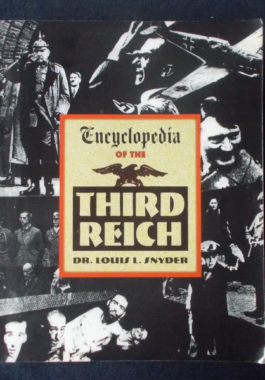 Regarded as a definitive selection of historical information covering all the important people of the time (Resistance members and Nazis); military operations; concepts; organisations of the era as well as those regarded as having been influential to the Nazi ideology. There is a chronology of every important date in the history of the Third Reich from the fall of the Weimar Republic to the end of World War II; a bibliography of pertinent books and articles; essays on art, architecture, film, theater, music, sports, religion, and education; documents such as Hitler's Last Will and his Political Testament and over 200 period photos and drawings.
Regarded as a definitive selection of historical information covering all the important people of the time (Resistance members and Nazis); military operations; concepts; organisations of the era as well as those regarded as having been influential to the Nazi ideology. There is a chronology of every important date in the history of the Third Reich from the fall of the Weimar Republic to the end of World War II; a bibliography of pertinent books and articles; essays on art, architecture, film, theater, music, sports, religion, and education; documents such as Hitler's Last Will and his Political Testament and over 200 period photos and drawings. -

Fire One! Hugh Clarke
$30.00Two true war time stories of Australia: Japanese midget submarines attacked Sydney Harbour in 1942, stunning Australia with their preparations, strategy and the aftermath - an attack that could have paved the way for the first wartime invasion in Australia's history. The greatest mass escape of prisoners-of-war in British milirtary history took place in the small country town of Cowra in 1944. The attempt was hopeless - 231 Japanese and 4 Australians were killed. Illustrated with black and white photographs. -
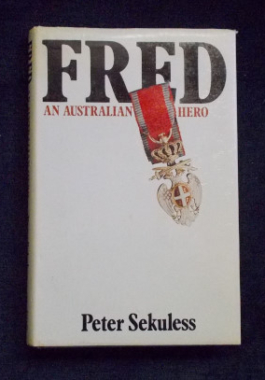 Toward the end of 1977, articles appeared in Australian newspapers about a remarkable 97 year-old Australian who had just died in Khartoum. They told of an heroic figure who had been with General Freyberg, then a junior officer, when he made his daring Dardenelles swim before the landing at Gallipoli; who had been mentioned in dispatches at the Battle of Beersheba; who had been with Lawrence of Arabia and who had won several decorations, including the George Cross for bravery under fire when he was chauffeur to the Governor-General of the Sudan at the time of his assassination in Cairo in 1924. He was one of the few Australians ever to win the coveted Serbian Eagle. This incredible Australian was Frederick Hamilton March. The newspaper articles so intrigued Sekuless than he began keeping a file on Fred March. Eventually, he travelled to Khartoum, Cairo, Gallipoli and London in a quest for information about this elusive and unknown Aussie hero to piece together the fascinating story of Fred March. Illustrated with black and white archival photographs.
Toward the end of 1977, articles appeared in Australian newspapers about a remarkable 97 year-old Australian who had just died in Khartoum. They told of an heroic figure who had been with General Freyberg, then a junior officer, when he made his daring Dardenelles swim before the landing at Gallipoli; who had been mentioned in dispatches at the Battle of Beersheba; who had been with Lawrence of Arabia and who had won several decorations, including the George Cross for bravery under fire when he was chauffeur to the Governor-General of the Sudan at the time of his assassination in Cairo in 1924. He was one of the few Australians ever to win the coveted Serbian Eagle. This incredible Australian was Frederick Hamilton March. The newspaper articles so intrigued Sekuless than he began keeping a file on Fred March. Eventually, he travelled to Khartoum, Cairo, Gallipoli and London in a quest for information about this elusive and unknown Aussie hero to piece together the fascinating story of Fred March. Illustrated with black and white archival photographs. -
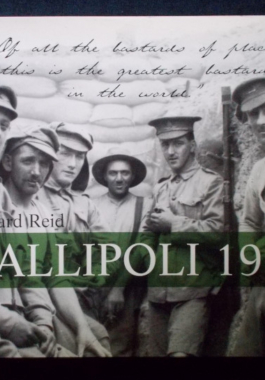
Gallipoli 1915: Richard Reid
$15.00A new look at the old legend of Anzac - an account of how ordinary blokes from many different countries coped in extraordinary circumstances not only in battle but back in the trenches. These men, whose fingers were too frozen to pull the trigger, buried their best mates, slept in holes in the ground and struggled with lice infested clothes. This book presents a remarkable and absorbing series of photographs from Australia's major archival collections, many previously unseen. These images often taken by the soldiers themselves, combined with illustrations created for the newspapers, were the images responsible for creating the public memory of Gallipoli back in Australia. The commentary of historian, Dr Richard Reid of the Department of Veterans' Affairs, together with moving extracts from soldiers letters and diaries, along with the official dispatches of war correspondents present at Gallipoli, paint an unforgettable record of the sacrifices, courage and determination embodied in the Anzac legend. -
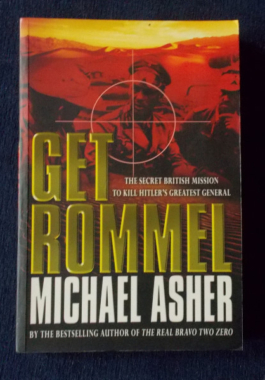
By the summer of 1941 Rommel was Hitler's favourite general. Sent to North Africa to halt the British advance into Libya, he not only stopped the British offensive but drove them back to their Egyptian base. He seemed unbeatable on the field so the British planned to kill him. On the eve of the British offensive Operation Crusader, a specially trained commando team marched into the desert and attacked Rommel's headquarters. At the same time, the newly created SAS parachuted sabotage teams close to the German airfields to knock out the enemy air forces on the ground. The author reveals how poor planning and incompetence in high places was counterbalanced by fantastic bravery and brilliant improvisation that enabled a handful of survivors to escape back to British lines and tell the true story of Operation Flipper: the plot to kill Rommel.
-

The author assesses and explains the role of Goering, dismissing the popular image of the corrupt and indolent buccaneer in order to show the central and serious political role that Goering played in the Third Reich. He shows all facets of Goering's personality, as well as the political context in which he exercised so much power.
-
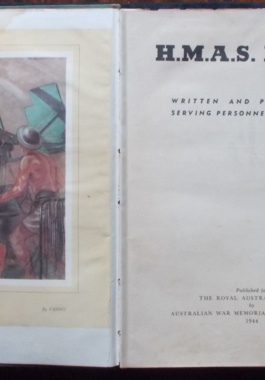
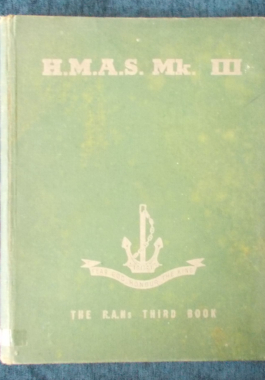
Published for the Royal Australian Navy buy the Australian War Memorial, Canberra in 1944. A book chockful of fabulous artwork, sketches, photographs, poems, writings and memoirs of the serving personnel of the Royal Australian Navy and their service in World War II - the men who were there as it all happened. A must for any real war buff. Illustrated in black and white and colour.
-

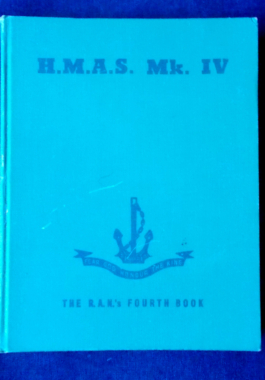 Published in 1945, this volume is literally by the men serving in the last days of World War II. Together, these articles, sketches, cartoons, poems and photographs are their story - not the story of the war, but a record of what they saw, felt and experienced. There's a humorous treatise on the Cockroach; an article on the first W.R.A.N.s to receive their sea training; and from an article simply entitled Tahiti by 'A.S.' : After dancing for a while I suggested a walk along the beach and the girls being agreeable were were soon settled down on the sands under the palms. Here is what I saw and felt. The moon shining through the palm fronds on the sand, while farther out the blue Pacific was breaking over the reefs, the moonlight making this appear like a lot of silvery cascades...my young lady's hair was lovely, and long enough to reach down and encircLe our waists, binding us together...I had read of scene such as these, but doubted them...Now I knew and felt...happy and contented and prepared to fall in love." One hopes that 'A.S. made his way home to Australia.
Published in 1945, this volume is literally by the men serving in the last days of World War II. Together, these articles, sketches, cartoons, poems and photographs are their story - not the story of the war, but a record of what they saw, felt and experienced. There's a humorous treatise on the Cockroach; an article on the first W.R.A.N.s to receive their sea training; and from an article simply entitled Tahiti by 'A.S.' : After dancing for a while I suggested a walk along the beach and the girls being agreeable were were soon settled down on the sands under the palms. Here is what I saw and felt. The moon shining through the palm fronds on the sand, while farther out the blue Pacific was breaking over the reefs, the moonlight making this appear like a lot of silvery cascades...my young lady's hair was lovely, and long enough to reach down and encircLe our waists, binding us together...I had read of scene such as these, but doubted them...Now I knew and felt...happy and contented and prepared to fall in love." One hopes that 'A.S. made his way home to Australia. -
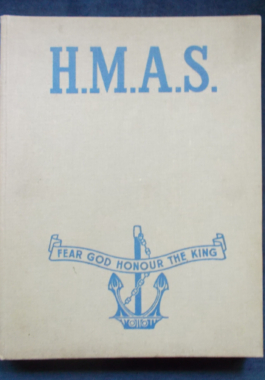 From the foreword: H.M.A.S. is the first attempt to give to the men of the Royal Australian Navy and to Australians generally, a story in some connected form, leavened by the thoughts and experiences of the actors themselves... Here is their story, told by the men themselves: war stories, funny stories, cartoons, paintings and photographs, all of which express the range of emotions these men felt and experienced. With colour plates tipped-in (as at publication), black and white sketches and photographs. A real treasure for those interested in the stories of everyday men that were not often heard. Here is the chance to listen to them tell it as it really was.
From the foreword: H.M.A.S. is the first attempt to give to the men of the Royal Australian Navy and to Australians generally, a story in some connected form, leavened by the thoughts and experiences of the actors themselves... Here is their story, told by the men themselves: war stories, funny stories, cartoons, paintings and photographs, all of which express the range of emotions these men felt and experienced. With colour plates tipped-in (as at publication), black and white sketches and photographs. A real treasure for those interested in the stories of everyday men that were not often heard. Here is the chance to listen to them tell it as it really was. -
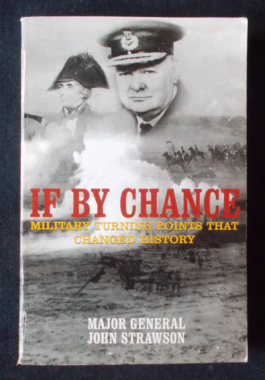 Could Napoleon have won the battle of Waterloo? And what would have happened if he had? Or suppose Nelson had not destroyed the French fleet at Aboukir, would Napoleon have conquered India and become Emperor of the East? What if Hitler had not halted his panzer forces before Dunkirk and had entrapped the entire British Expeditionary Force? How would Churchill have then denied the Wehrmacht? If by chance Hitler had been assassinated in 1944 and the German General Staff taken control, would there have been a totally different kind of surrender? In examining these and other contingencies, Major General Strawson brings his experience of command in war and his skill as a military historian to present us with an enthralling catalogue of chance and speculation, while emphasising how profoundly the character of commanders influenced events and how events affected their character.
Could Napoleon have won the battle of Waterloo? And what would have happened if he had? Or suppose Nelson had not destroyed the French fleet at Aboukir, would Napoleon have conquered India and become Emperor of the East? What if Hitler had not halted his panzer forces before Dunkirk and had entrapped the entire British Expeditionary Force? How would Churchill have then denied the Wehrmacht? If by chance Hitler had been assassinated in 1944 and the German General Staff taken control, would there have been a totally different kind of surrender? In examining these and other contingencies, Major General Strawson brings his experience of command in war and his skill as a military historian to present us with an enthralling catalogue of chance and speculation, while emphasising how profoundly the character of commanders influenced events and how events affected their character. -
 In the split second that it took Associated Press photographer Joe Rosenthal to snap the shutter of his Speed Graphic, a powerful and enduring American symbol was born. Iwo Jima: Monuments, Memories and the American Hero tells the story of that icon as it appeared over the next 40 years in bond drive posters, stamps, Hollywood movies, political cartoons, and sculpture, most notably the colossal Marine Corps War Memorial outside Washington, D.C. It is also a brilliant and moving study of the soldiers who fought one of the bloodiest battles in modern warfare and the impact that Iwo Jima had on the rest of their lives. The battle of Iwo Jima raged for many days and ultimately claimed the lives of almost 7000 American serviceman, yet that famous photo - a grainy outline of massed men and their flag - already symbolised victory.
In the split second that it took Associated Press photographer Joe Rosenthal to snap the shutter of his Speed Graphic, a powerful and enduring American symbol was born. Iwo Jima: Monuments, Memories and the American Hero tells the story of that icon as it appeared over the next 40 years in bond drive posters, stamps, Hollywood movies, political cartoons, and sculpture, most notably the colossal Marine Corps War Memorial outside Washington, D.C. It is also a brilliant and moving study of the soldiers who fought one of the bloodiest battles in modern warfare and the impact that Iwo Jima had on the rest of their lives. The battle of Iwo Jima raged for many days and ultimately claimed the lives of almost 7000 American serviceman, yet that famous photo - a grainy outline of massed men and their flag - already symbolised victory. -
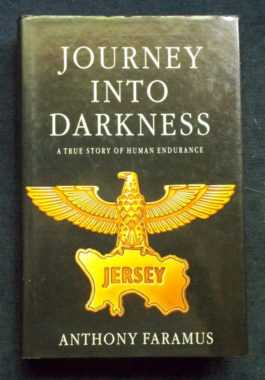 By 194o, the isle of Jersey was well and truly under the Nazi jackboot. The legitimate authorities collaborated with the occupying power. For islander Anthony Faramus, this would have horrific consequences. When the local police reported him to the Germs for possession of a British leaflet, Faramus was jailed for one month. Then the Jersey authorities prosecuted him for defrauding his employer of 90 Occupational Marks. His employer was the collaborationist state, which put him to work in a motel commandeered by the Germans. This time he got six months' hard labour. Shortly after his release, Faramus was sent to Occupied France as a political prisoner. The authorities had sent young Anthony Faramus on the first stage of a journey into the dark heart of Nazi tyranny - but to begin with, imprisonment in France's Fort de R9omainville was surprisingly enjoyable, with fellow prisoners, men and women, from a fascinating cross-section of society. But after Romainville came selections... transports...and the death camps of Buchenwald and Mauthausen...
By 194o, the isle of Jersey was well and truly under the Nazi jackboot. The legitimate authorities collaborated with the occupying power. For islander Anthony Faramus, this would have horrific consequences. When the local police reported him to the Germs for possession of a British leaflet, Faramus was jailed for one month. Then the Jersey authorities prosecuted him for defrauding his employer of 90 Occupational Marks. His employer was the collaborationist state, which put him to work in a motel commandeered by the Germans. This time he got six months' hard labour. Shortly after his release, Faramus was sent to Occupied France as a political prisoner. The authorities had sent young Anthony Faramus on the first stage of a journey into the dark heart of Nazi tyranny - but to begin with, imprisonment in France's Fort de R9omainville was surprisingly enjoyable, with fellow prisoners, men and women, from a fascinating cross-section of society. But after Romainville came selections... transports...and the death camps of Buchenwald and Mauthausen... -
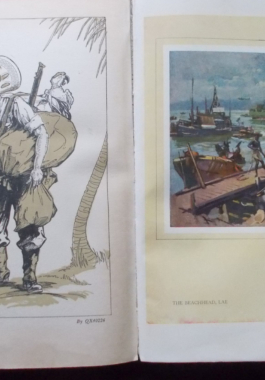
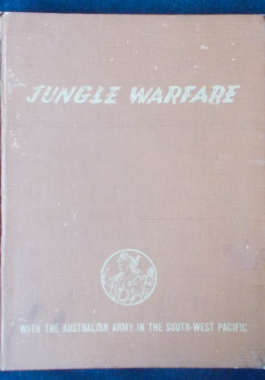
Published for the Australian Military Forces by the Australian War Memorial, Canberra, in 1944. Full of sketches, poems, colour plates and photographs, cartoons and jokes, as well as those fabulous yarns that Aussies can tell so well - and all by the service personnel who were engaged in the South West Pacific during World War II. Contributors are identified only by their service numbers...so your grandfather or great grandfather may be among the authors. Here we do not find battle statistics, plans or generals - just the down to earth Australian Diggers.
-
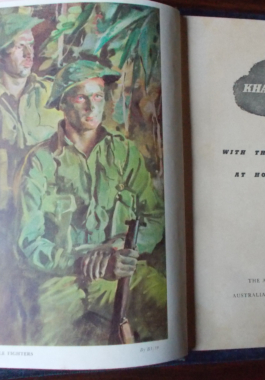
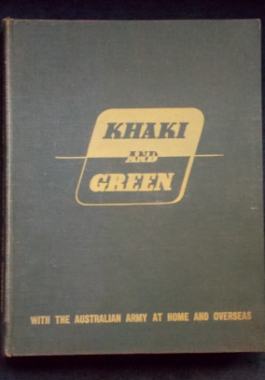
With the Australian Army at Home and Overseas. Published for the Australian Military Forces by the Australian War Memorial, Canberra, 1943. With news and information - literally - as it happened from the Middle East and the South West Pacific. Chapters and writings include: Alamein Christmas Shops; Luck and Gus; I Saw a Panzer Attack; The Log Which Wasn't; Moon Madness; Survival of the Fairest; No Mates in the Army and much more, all written by Australia's Own. With stories, yarns, cartoons, poems, fabulous colour plates, black and white illustrations and photographs. Real war history.
-

Kokoda: Peter Fitzsimons
$12.00The Kokoda Track is the symbol of World War II for Australians. This book takes readers up that tortuous track and into battle with the young men who fought there, following in the footsteps of heroes and villains as they climb the endless mountain ranges, dig into defend, charge into battle or begin the long, desperate and bloody trek to safety. Here can also be found the perspective of the Japanese troops and the extraordinary local people who the Diggers called 'angels'.
-
 In the darkest days of World War II, this is the true story of ten brave young men flying their twenty-fifth and final bombing mission in the Flying Fortress, Memphis Belle. Some say the team is exceptional; others that the Memphis Belle is the luckiest plane in the war. But this is a mission that can change everything. Only if the men can successfully destroy the munitions factory in the heart of Germany will they get to go home. Dangerous, almost impossible, it is a mission that will test their skill and teamwork to the limit - and each man will become a hero - whether he lives or dies. Monte Merrick also wrote the screenplay for the Warner Bros film of the same name.
In the darkest days of World War II, this is the true story of ten brave young men flying their twenty-fifth and final bombing mission in the Flying Fortress, Memphis Belle. Some say the team is exceptional; others that the Memphis Belle is the luckiest plane in the war. But this is a mission that can change everything. Only if the men can successfully destroy the munitions factory in the heart of Germany will they get to go home. Dangerous, almost impossible, it is a mission that will test their skill and teamwork to the limit - and each man will become a hero - whether he lives or dies. Monte Merrick also wrote the screenplay for the Warner Bros film of the same name.


